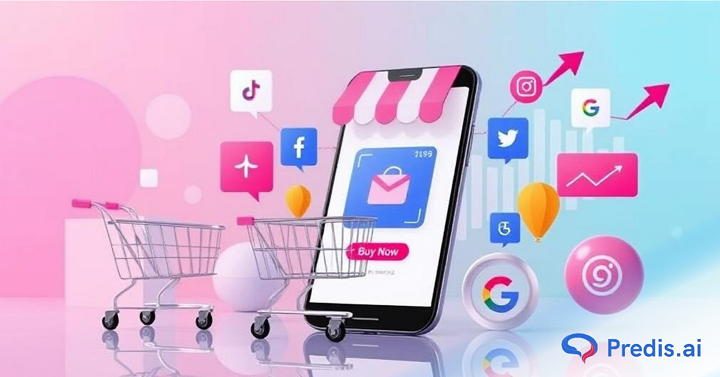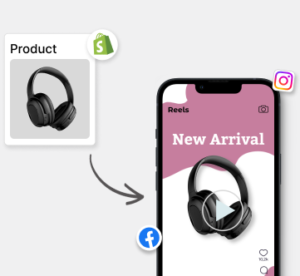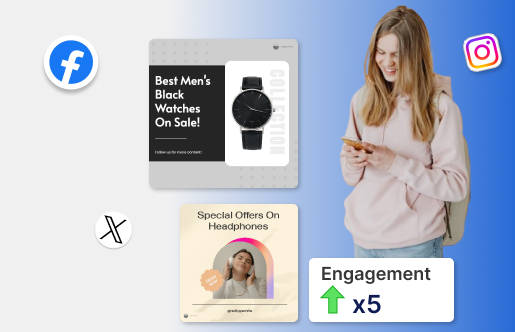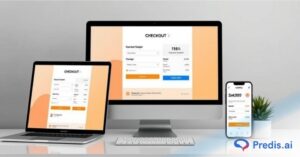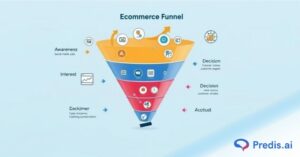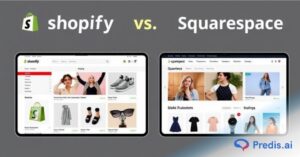Do you ever notice that after showing interest in a random product while casually browsing the internet, you end up seeing ads for that same product everywhere you go online? This is targeted advertising, in a nutshell.
Targeted ecommerce ads on social media have proven to be one of the most effective marketing channels in recent years. If you are looking to capitalize on this marketing strategy and are looking for information on how to target e-commerce ads on social media, you are in the right place.
In this blog, we will explain everything you need to know to start using targeted e-commerce ads on social media. Dive in!
Why Create Targeted Ecommerce Ads on Social Media?
Before we get into how to create targeted ads, let us first understand why you should be focusing on them in the first place. Targetted e-commerce advertising offers several advantages over generic ads such as:
- Precision Targeting: The ability to precisely target your target audience based on factors such as demographics, interests, hobbies, or online behavior.
- Relevant Advertising: The ability to deliver personalized and relevant ads ensures that your messaging resonates with your audience. For instance, displaying hair product ads to individuals who are bald would likely be ineffective and wasteful, as it doesn’t align with their needs or interests.
- Reduced Ad Spend: Continuing with the above example, you save a lot when you do not send ads to irrelevant people. This invariably results in a higher ROI.
- Improved conversion rates: Targeted ads attract users who are genuinely interested in your product or service and can drastically improve conversation rates.
- Access to Performance Data: Targeted ad campaigns help you gather detailed data on their performance. This information can then be used to retarget customers or improve your campaign performance with data from A/B testing.
How to Create Targeted Ecommerce Ads on Social Media?
When we create targeted e-commerce ads, we follow a lot of the same strategies as we do in conventional marketing and advertising. Let me walk you through the process.
1. Understand Your Target Audience/Customers
Before we can even get into the creative aspects of this process, you first need to do the legwork to understand who you are targeting your ads at. While you already have a general idea of who our ideal target audience is, to create precisely targeted e-commerce ads on social media, you need to go a few steps further. Let’s take a look at these in detail.
Step 1: Breakdown Your Target Audience
Let us take, for example, an e-commerce business that sells footwear specifically for men. Now, it is understood that the generic target audience here is men. However, not all of them are going to be looking for the same thing.
While one may be on the lookout for his next Oxford or a Brogue, another may be interested in hiking boots, and a third may be interested in running shoes. See where I am going with this?
This is why we break down our target audience into smaller groups by a process of audience segmentation. Here, we can break your target audience into sub-groups based on factors such as:
- Demographics
- Behavior
- Interests
- Stage of buyer’s journey
- Level of engagement and even
- Device usage
Taking the additional effort to segment your audience will help you:
- Target each group with ads that are most relevant to them.
- Gain an edge over your competitors who have skipped this step.
- Help you attract and retain customers the right customers.
Once you have segmented your audience, we move on the the next step of the process – creating buyer personas for them.
Step 2: Create Buyer Personas
Buyer personas are, in essence, fictional representations of your ideal customer. Now, you may ask, why create these when we have already segmented our audience into smaller groups? The answer is simple: segmentation is a great starting point, but what it lacks is the depth of understanding of the people in those smaller segments.
Buyer personas help you humanize your audience by utilizing all available data (demographic and psychographic) to understand their motivations, behaviors, and pain points. When you do this, you can truly personalize your ads to reflect their needs best.
Stats show that nearly 70% of companies have exceeded their goals for lead generation and revenue with the help of buyer personas.
Pro Tip: Use Google Analytics 4 (GA4) and your CRM to gather vital demographic data and sentiment and website tracking tools to gather all the psychographic data you need to create detailed buyer personas.
2. Build Specialized Ad Campaigns
At this stage, we have our customers segmented and detailed buyer personas in place, and now it is time to build specialized ad campaigns to target them. Here is how you can go about it.
Step 1: Develop a Content Strategy
Let’s say, for example, we intend to create targeted e-commerce ads on social media based on a customer’s journey. We know that a customer journey can be broadly categorized into four stages that are:
- the awareness stage
- the consideration stage
- the decision stage and
- the post-purchase stage
In the awareness stage, you are targeting potential customers who aren’t familiar with your brand. So, the content here should ideally be focused on:
- Introducing your brand.
- Highlighting you can solve their pain points
- Or simply piquing your potent customer’s interest with useful snippets of information.
In terms of content, you can use e-commerce video ads or infographics.
The customers in the consideration stage, already know about you, so for this group of customers, the content in your ads should focus on
- Highlighting your products and how they are a step above your competition.
- Displaying social proofs (customer reviews, testimonials, or case studies) to back up your claims of a superior product or service.
Comparison charts are an example of content you can use here.
For customers in the decision stage, the content in your ads should be such that it nudges your customers toward making that purchase. Here, your focus should be on the following:
- Highlighting and discounts, freebies, or one-off deals
- Your ads should have clear CTAs like “Shop now” “Claim this while the offer lasts” and so on.
The key here is to use FOMO sparingly and strategically. Your customers should not feel pressured in any way.
Finally, we have a group of customers who have already made a purchase. Here, the goal is to convert them into repeat customers. Here, you can re-target them with ads that
- Recommend products based on previous purchases.
- Exclusive offers for returning customers.
Step 2: Choose The Right Social Media Platform To Run Your Ads On
Now that you have a content strategy in place for your ads, the next step of the process is to decide on which social media platform should you run ads on. There are multiple approaches to this specific process.
One approach could be based on the target audience’s digital footprint.
We can break this down into the following categories:
1. Demographic alignment
Certain locations tend to gravitate toward certain platforms. Pinterest, for example, has the highest penetration in the Netherlands (nearly 40% of the population) as opposed to Switzerland (24.8% of the population.) India has banned TikTok altogether.
The same holds when you consider age as a factor. Gen Z is more likely to gravitate toward platforms like TikTok and Instagram whereas the millennials and Gen X are more likely to gravitate toward Facebook.
2. Interests
Your target buyer’s interests, too, are a deciding factor. The creative folks are most likely to be on Pinterest. Nearly 80% of frequent users on the platform (aptly named “pinners”) discover new products or brands from the platform.
If you are a B2B player, then LinkedIn should be your preferred platform to target. Even if you are not, a survey conducted by Statistica revealed that over 50% of users on the platform come from high-income households, (which makes it a gold mine for selling high-ticket items).
Similarly, people who are more fashion-oriented are more likely to be on Instagram.
3. Platform Usage/Dominance
Some platforms will be frequented more often or may be the go-to platform for a specific target audience.
For example, in 2023, the average US Adult spent
- 53.8 minutes a day on TikTok
- 48.7 minutes a day on YouTube
- 34 minutes a day on Twitter and about
- 24 minutes a day on Reddit.
So if the average US adult is your primary target audience, TikTok and Youtube should be the first platforms you run your targeted ads on.
You can also choose to go with a platform based on the following factors:
- Your Brand’s Personality: If you are a luxury brand, for example, Instagram ads are a better alternative to running ads on Snapchat or TikTok.
- A Platform’s Capability/Features: If videos are the cornerstone of your marketing content, then to run your eCommerce video ads, YouTube, Instagram, and Facebook should be your choices.
- Where Your Competition Is Succeeding: You don’t have to reinvent the wheel. Do some competition research and see what kind of ads on which platforms are working best for them. Identify any weaknesses and try to fill in those gaps.
Pro-Tip: Focus over diversification, especially when starting off with paid advertising. While this is undoubtedly a numbers game, it’s best to concentrate your resources on a few select platforms. It will be easier to manage your campaigns and stay on top of any changes to algorithms or policy updates.
3. Create Compelling Ad Creatives
Up until now, we have been laying down the technical foundations upon which we will build our ad campaign. Now we get to the fun part, your ad creatives.
Your ad creatives are, simply put, the heart of E-commerce advertising and make all the difference between getting your target customer to click on your ad or continue scrolling.
Now, Ad creatives, in essence, should have the following four elements:
- Great visual design that stands out and grabs your target customer’s attention. (The average attention span of someone scrolling online is just about 8 seconds.)
- A compelling ad copy that stands out. For the uninitiated, ad copy refers to the text that highlights the unique selling points of your product or service or addresses their pain points.
- A CTA that is simple, action-oriented, and visible.
- Consistent branding (color schemes, icons, logos) that instantly identify your brand.
Take a look at this ad from the Swedish car maker, Volvo.
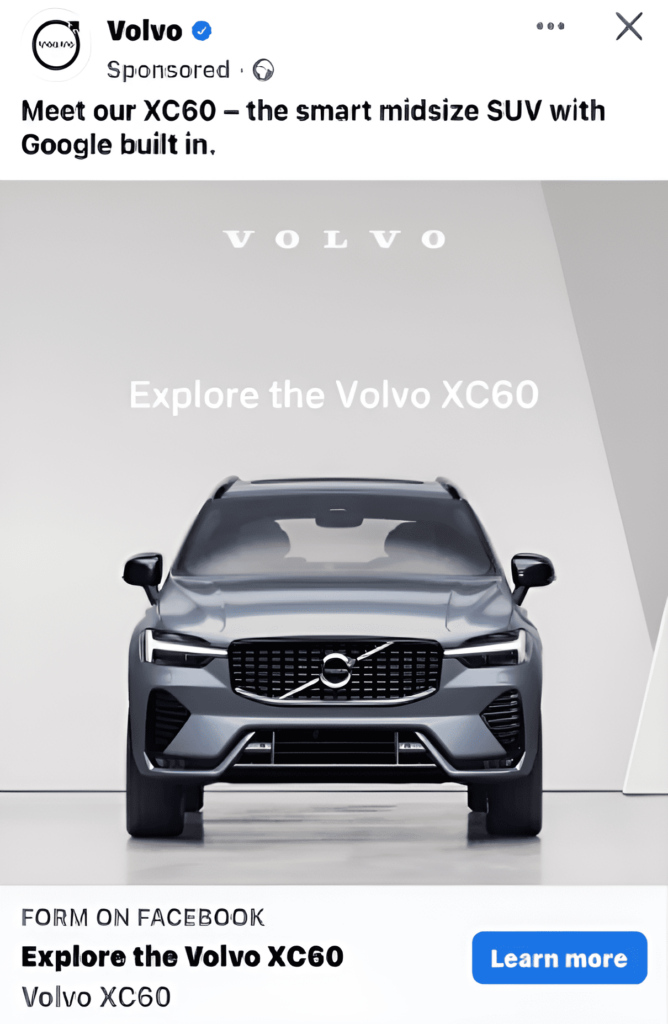
Volvo’s logo is clearly visible along with the product, making it instantly recognizable. The design, while minimalistic, does its job of highlighting the primary product, in this case, the XC60. At the bottom is a clear CTA that guides the customer through the next steps.
Here is another example of a creative ad from LegalWise, a legal firm based in South Africa.
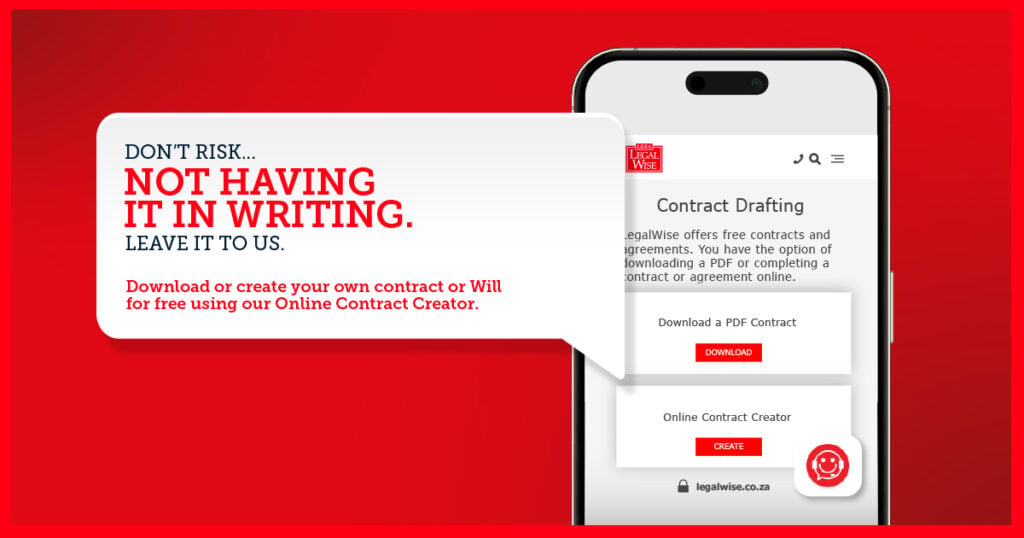
The red theme and the lettering immediately capture the target audience’s attention. The accompanying ad copy clearly describes a pain point and how LegalWise can help. While they do not have a CTA, the lettering has been carefully crafted to get the reader to act immediately.
4. Use The Right Ad Format
There are several formats in which you can run targeted e-commerce ads on social media. Each has its benefits and works best for specific platforms:
1. Image Ads
The human brain can process images in just a few milliseconds. Add to this the fact that more than half of the population are visual learners and you can see how powerful images can be when used in ads.
High-quality images are perfect for showcasing products, while creative graphics work well in promoting any special offers or discounts. What’s more, image ads are the most versatile and can be used on every social media platform today.
2. Video Ads
Video ads open up endless possibilities for conveying a lot of information to your customers in a short amount of time. In fact, video ads can improve conversion rates and ensure a higher level of engagement by delivering a dynamic and immersive experience that captures attention and drives action more effectively than static ads.
YouTube is the preferred platform for marketers in 2024 (about 90% of them use it.) That said, considering the scrolling behavior, it’s best to keep them short and engaging.
3. Stories (Youtube and Instagram ads)
Stories are a feature on Instagram and YouTube; both platforms allow you to run ads as stories. Instagram, in fact, is a social channel with the second-highest ROI, which makes it an excellent format for storytelling or product demonstrations.
Use Predis.ai Ad Generator to create compelling and engaging story ads that capture attention and drive conversions.
5. Launch Your Ad Campaign And Track Your Performance
At this point, our audience has been segmented, buyer personas are in place, and our ad creatives are ready. Now it is time to launch your campaign, sit back and relax, and reap your rewards.
However, we still have a long way to go before we can make this e-commerce advertising exercise a success. To ensure that your ads are performing as well as they can, their performance needs to be monitored, and you need to keep optimizing them as the date comes in.
To do so, you need to keep an eye on the following metrics:
- Impressions: Impressions tell you how many times your ads have appeared on people’s screens. They are by no means an indicator of engagement but a good starting point to know how far and wide your reach is.
- Average Watch Time: As the name implies, this metric indicates how long your eCommerce video ads have engaged the average customer. The higher this value, the better, as it’s a clear indication that this version of your ad is grabbing and retaining your target audience’s attention.
- Click Through Rate (CTR): CTR is the percentage of customers who have been influenced enough by your ad to click on it. Just as is the case with the previous statistic, the higher this number, the better.
- Conversion Rate (CR): This is the holy grail of metrics and indicates how many people have done what your ad was supposed to make them do. (buy something, subscribe, or sign up). This one metric defines the success of your overall ad campaign.
- Cost per click (CPC): CPC is the average cost you pay for every click on your ad. The lower this value, the better, as it indicates that you are spending your ad revenue wisely.
- Ad Spend (AS): This metric tells you the actual amount of money you invest in advertising campaigns.
Where do you get this data from?
Fortunately, every major platform out there offers built-in analytics tools that can give you all of the above information and more. You can also link all of these platforms to Google Analytics 4 and use that as one single source of truth for your entire Ad campaign.
With Google now announcing that will not be doing away with third-party cookies as initially planned, you can continue to depend on tried and tested strategies to track all of these metrics for the time being.
The Importance Of A/B Testing In Improving Campaign Performance
As I mentioned earlier, to get the most out of targeted e-commerce ads on social media, you need to continually monitor and tweak them. That is where A/B testing comes in.
A/B testing is a performance improvement strategy where in you create multiple versions of your ad creatives and show them to statistically significant portions of your target audience. You then track all of the above-mentioned metrics to determine what resonates better with each segment and alter your campaign to boost your ROAS.
Boost Sales on Social Media with AI ⚡️
TRY NOWThe beauty of A/B testing is that you can create variations of each of the elements of your ad creative, which are:
- The visuals
- The headlines
- The ad copy and
- The CTA.
You can even try out the various forms with different demographics to determine if one is responding better to a specific version of your ad. With this data-driven approach, you can ensure that your paid advertisements are worth every penny you invest in them.
Summing It Up
There you have it—a detailed road map on how to do targeted ads on social media for e-commerce. We’ve covered everything from understanding your target audience and creating buyer personas to crafting compelling ad creatives (smartly with the right tools for the job) and launching data-driven campaigns.
The key to success here is to realize that this exercise is not a one-hit-wonder and requires consistency on your part to monitor and improve your campaign over time continually.
Use Predis.ai Social Media Ad Copy Generator to streamline the creation process and ensure your ads resonate with your audience.


